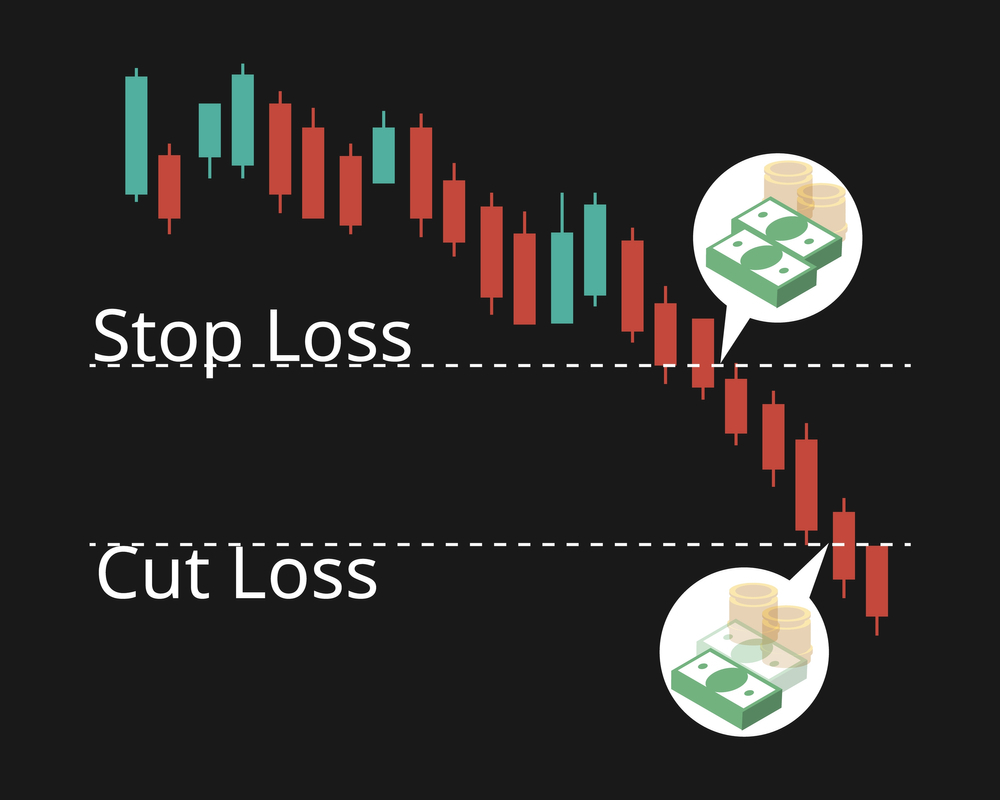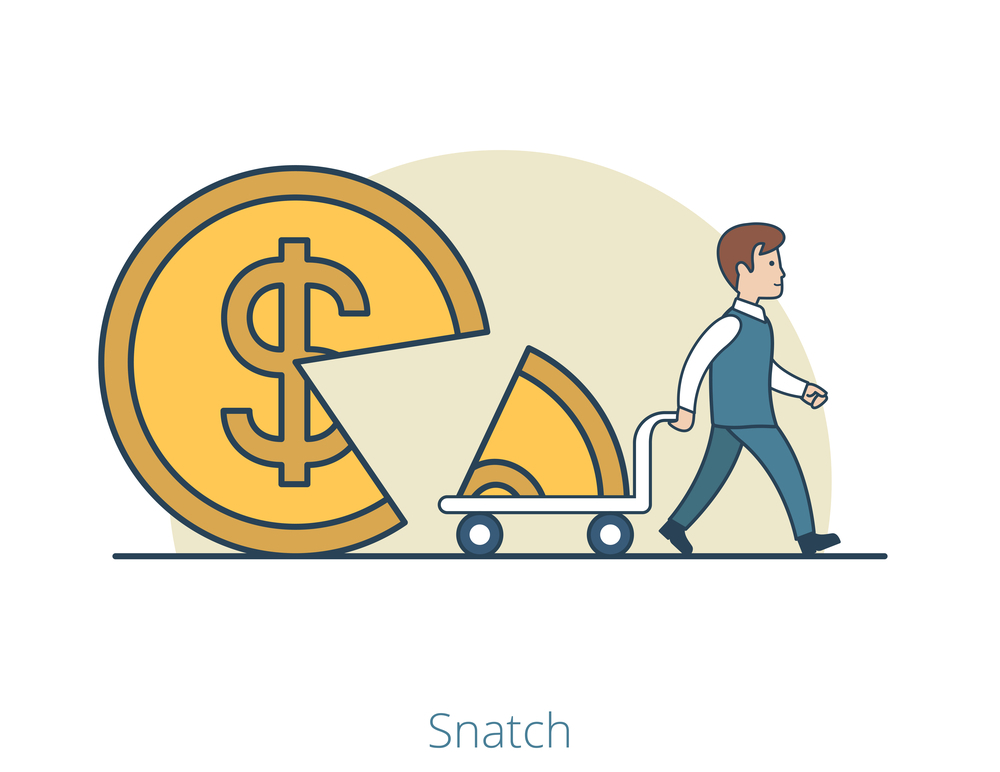How to set stop loss and take profit in Forex?
The most important aspect for a trader is to accumulate and preserve trading profits.
In case you lose all of your funds, there is no way to recoup your losses; you are out of the game.
If you make some pips, you must retain them rather than give them back to the market.
Still, let's be honest. The market always does what it wants and shifts in the direction it wants.
Each day has a new challenge, and almost everything from unexpected economic data releases to central bank policy speculations can move markets one way or the other quicker than you can snap your fingers.
This means you need to cut losses and take your profits.
But how can one do that?
Simple! By setting stop-loss and take-profit.
Don't get intimated if you don't know what they are, as, in this guide, we are going to tell you what stop-loss and take-profit are and how you can set them.
1. Stop-loss
A stop loss is a stop order that closes a trade at a certain price if market moves against the trade.
A stop-loss order is a protective tool that is used to prevent additional losses.
When the price moves against you and exceeds the loss you can aford, it immediately closes an open position.
For example, if you are long GBP/USD at 1.4041, you could set a stop-loss at 1.3900. If the bid price falls below this level, the trade will close automatically.
A key point to add here is that stop-loss orders can only limit losses; they cannot cancel losses completely.
Trades are closed at current market prices when the stop loss level is reached, thus in a volatile market, there could be a difference between the position close price and the stop-loss level you placed.
How to set stop-loss?
One of the skills that differs good traders from their counterparts is the ability to place stop-loss orders wisely.
They hold stops close enough to avoid experiencing massive losses, but they avoid setting stops so close to the trade entry point that they are forced to exit a trade that would have potentially been profitable.
A successful trader sets stop-loss orders at a level that would protect his trading funds from unnecessary losses; while avoiding being needlessly stopped out of a position and thereby losing out a real profit opportunity.
Many inexperienced traders believe that risk management involves nothing more than placing stop-loss orders very close to their trade entry point.
Right, part of a good risk management practice entails not to enter trades with stop loss levels that are so far away from your entry point that the trade has an adverse risk/reward ratio.
For example, when you risk more in case of a loss compared to the planned profit.
However, running stop orders too close to the entry point is a common contributor to a lack of trading experience.
It’s critical to only enter trades in which you can positions a stop-loss order close enough to an entry point to prevent further losses.
However, it is also important to set stop orders at fair price levels based on your market research.

Here are a few things to consider about stop losses:
- Set a stop loss based on the current market situation, and your trading plan.
- Set your stop loss levels based on how much you can afford to lose, not how much you are willing to gain.
- The market has no idea how much money you have or how much money you can afford to lose. To be honest, it does not care.
- Determine the stop levels that would prove the wrong trade direction and then plan your position size accordingly.
Trailing stops
While talking about stop-loss, how can one not mention trailing stops?
A trailing stop is a form of stop-loss order that moves with the price of a trade.
Let’s assume you have a long position with a trailing stop. When the price rises, the trailing stop rises accordingly, but when the price falls, the stop-loss price stays at the same level it was pulled to.
A trailing stop allows a trade to continue gaining profit when the market price moves in a favorable direction; on the other hand, it closes the trade automatically if the market price unexpectedly moves in an unfavorable direction.
Trailing stop is a technique of protecting a long position from the downside when locking on the upside. Alternatively, the other way around for short position.
Trailing stop order is similar to stop-loss order in the way that it closes a trade automatically if the price moves in the adverse direction by a given distance.
The main feature of trailing stop order is that the trigger price would automatically follow the market price by the defined distance as long as the market price moves in a favorable direction.
Let's say that you've decided to short EUR/USD at 1.2000, with a trailing stop of 20 pips.
This means that your original stop loss would be set at 1.2020. If the price goes down and hits 1.1980, your trailing stop would move down to 1.2000 (or breakeven).
However, keep in mind that your stop order will remain at the new level from now on if the market rises against you.
Coming back to the example, if EUR/USD reaches 1.1960, the stop order will switch to 1.1980, resulting in a 20-pip gain.
Your trade will remain open as long as the price does not move 20 pips against you.
When the market price reaches your trailing stop price, a market order will be sent to close your position at the best available price, and your position will be closed.
Pros of stop-loss
- Allows decision-making free from emotions
- Can be easily implemented
Cons
- Not suitable for scalping
- Sometimes it can be hard to understand where to place stops.
2. Take-profit
Every trade, at some stage, requires an exit. The easy part is getting into a trade; however, the exit decides your profit or loss.
Trades can be closed based on the adoption of a certain set of conditions, a trailing stop-loss order, or the use of a take-profit.
When the price of an open order hits a certain level, a take profit order closes it immediately.
As a trader, it’s your job to close your positions on high. Take profit allows you to lock in your profits.
Once the price reach your set target, a take-profit order closes the positions instantly, leaving you with sure profits. It also allows you to take advantage of quick market rise. So, you can close your positions profitably.
However, it can prevent more profit growth.
For example, if you are long GBP/USD at 1.3850 and you want to take your profit when the price reaches 1.3900, you should set this rate as your take-profit level.
If the bid price touches 1.3900, the open position is closed automatically, securing you 50 pips profit.
How to set a take-profit?
Setting a profit target is an art—you want to maximize as much profit as possible depending on the market you're trading, however you shouldn`t be too greedy, or the price would probably reverse. So you don't want it to be too near or too far away.
Using a fixed reward to risk ratio is one of the easiest methods for determining a profit target. Your entry point will determine your stop loss level. This stop-loss determines how much you can afford to lose on this trade. The profit target should be 3:1 to the stop-loss distance.
For instance, if you buy a currency pair at 1.2500 and place a stop loss at 1.2400, you are risking 100 pips on the trade. Using 3:1 reward to risk ratio the profit target should be placed 300 pips from the entry point (100 pips x 3), at 1.2800.
When we use Take Profit and Stop Loss with higher reward / risk, we intend to make more profit when the price hits Take-profit compared to if the price hits Stop Loss. But we can not predict the future market price.
As a result, your predetermined take-profit orders become quite random. However, if you have a strong entry method and a well-placed stop loss, take-profits can work wonders.

For day trading typical reward to risk ratio ranges between 1.5:1 and 3:1. Practice on a demo account with the market you are trading to see if a 1.5:1 or 3:1 reward to risk ratio works better with your specific trading strategy.
Pros
- Confirm positions are closed on a high
- Reduces emotional trading
Cons
- Not good for long-term traders
- Limits chance of further profits
- Can't take advantage out of trends
Bottom line
The risk/reward ratio needs to be determined before the trade is even placed by setting a stop loss and a profit target. You can either make X or lose Y, and you can decide whether or not to carry on the trade based on that specific parameters.
As we mentioned in the beginning, it's all about cutting your losses and protecting your trading profits, and stop-loss and take-profit help you to achieve this goal.
Click on the button below to Download our "How to set stop loss and take profit in Forex?" Guide in PDF
